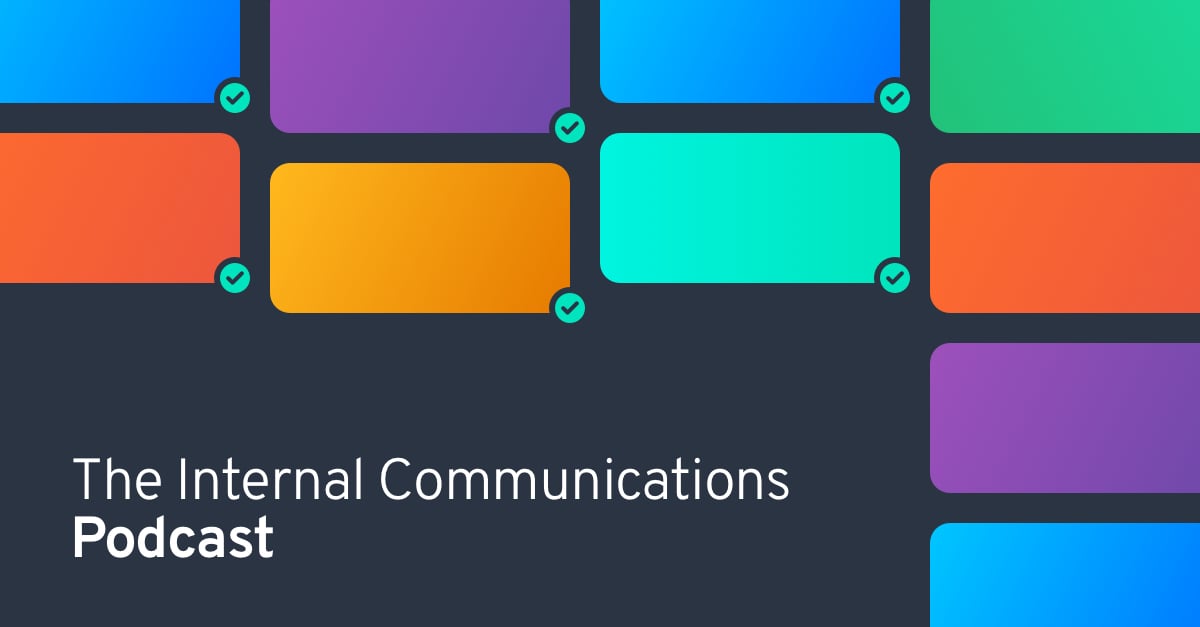
Internal Communications Expert insights
Podcast: Internal Communications by Mike Klein

4 mins read
Start building your digital home with Happeo
Request a demoInternal Communications Expert insights
Product
Features
Solutions
Happeo for
Use cases
Resources
Explore
Support
Happeo For
Use cases
Comparisons
Explore
Support
Recent

Jonathan Davies
4 mins read
Can Internal Communications professionals change the game before the game changes them? In this podcast we explore the first in a six-part series of research performed by one of Internal Communications’ most recognizable veterans: Mike Klein.
“The present and future of Internal Communications” is a series of six qualitative research reports that analyze where Internal Communications sits in 2019, and where it will go beyond that. To accompany the report, I’ve had the pleasure of hosting Mike for a 30-minute podcast. In it, Mike talks about the first report, hints at the research from the second report and shares general Internal Communications wisdom – including a short case study on easyJet’s merger with Go Airways. Here’s the free podcast:
Listen on Apple Podcasts | Spotify | Stitcher
Can’t listen just yet? Below is an excerpt of the first 10 minutes from The Internal Communications Podcast. Want to remain up-to-date on Mike’s research? Sign up for our exclusive Internal Communications community. Entries will be strictly monitored to allow for qualitative conversation free of commercialism. Here's the excerpt:
I designed this research to figure out more about what people weren't saying, than what people were saying. There's a ton of quantitative research that goes on, I mean, you've got the State of the of the Sector survey that Gatehouse does. Wonderful thing, very quantitative, looking very much at the present but reflecting much more broadly on the past. What I wanted to do is get a picture in this first report of the present but to set the stage for a discussion about the future, and I guess the most significant is that the profession is still stuck in the same conversation that it has been stuck in for the last 20 years about not getting the right relative recognition, not getting the seat at the table not being able to define the content that it's tasked with producing. But the trends that are heading towards to Internal Communications, the ones that aren’t being seen by people with their head down, have the potential to completely change the course of the Internal Communications discipline moving forward.
It’s a vicious cycle. Internal Communications people are brought in for their skills rather than their strategic knowledge or their ability to integrate things that are going on at a macro level. They’re great at writing, event planning, organization – sometimes they also have amazing people skills. That said, no one comes into Internal Communications by design. They come into it by accident, because their role falls into it, because they like it or even because it’s easy. Because that strategic mindset is missing, it makes it hard to transcend that and become credible with senior leaders and managers who are used to people with a higher level of analytical rigor.
No, but it should. That’s one of the reasons I wrote the report.
I’m still involved in it because I see the value in it. I see the potential value of strategic internal communication. The ability to shift the way organizations think and operate. The way they prioritize and focus. This is stuff that adds every bit as much value as being good at Finance, at Operations, at HR. The problem is we haven’t begun to articulate that in a way that’s instantly compelling for senior leadership. As we look through this series, what we’re going to figure out is what is compelling, and what do senior leaders want to see to take decisive action and up Internal Communications on their strategic credibility list.
There’s no consistency because it differs through needs. Sometimes it’s in HR because it needs a people-oriented approach. Sometimes it’s in corporate comms because it uses a similar skill set, or it’s in a function that decided it needs access to, for a lack of better words, “the corporate megaphone”. My experience tells me that a stakeholder who has actual use for Internal Communications delivers better results than having Internal Communications sit with a stakeholder because it’s a natural operational or cultural fit.
The reality is, Internal Communications will stop being a corporate function. It will start being a business discipline because there’s enough stuff happening. In the first report, I deal with two specific trends: digital workplace and employee experience.
Digital workplace is effectively IC+IT, with a large side-order of Operations and HR. Employee Experience is going to be IC+HR, with side orders of IT, Brand and perhaps even Finance. Internal Communications will need to be central to these two areas, which are currently largely outside of the Internal Communications remit. I can conclusively say that none of the in-house Internal Communications professionals I interviewed were talking about these trends directly. These are two major Internal Communications trends that have little Internal Communications or leadership people involved. But just because Internal Communications isn’t driving this, it doesn’t mean there’s no Internal Communications content implications and structural impact.
One of the lines that I use is “there’s light at the end of the tunnel, but are they oncoming trains?”
